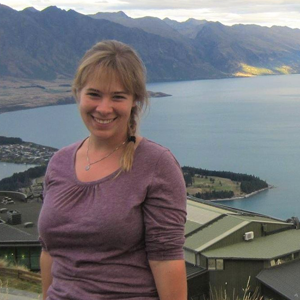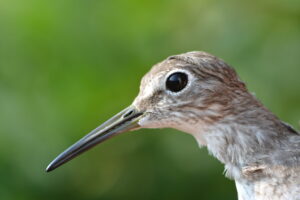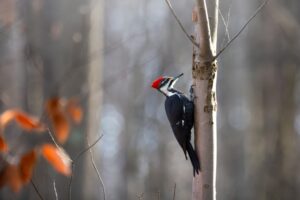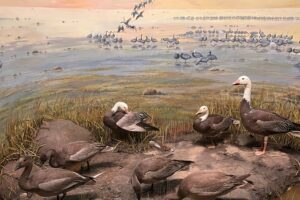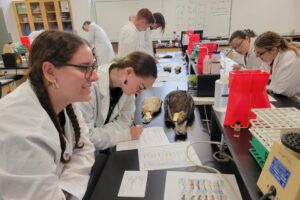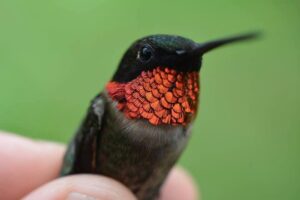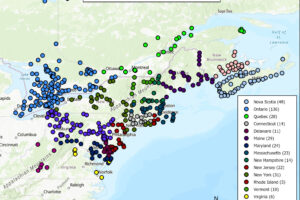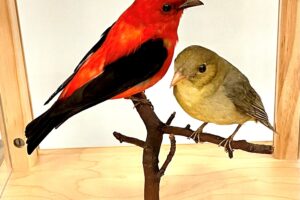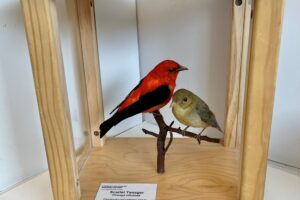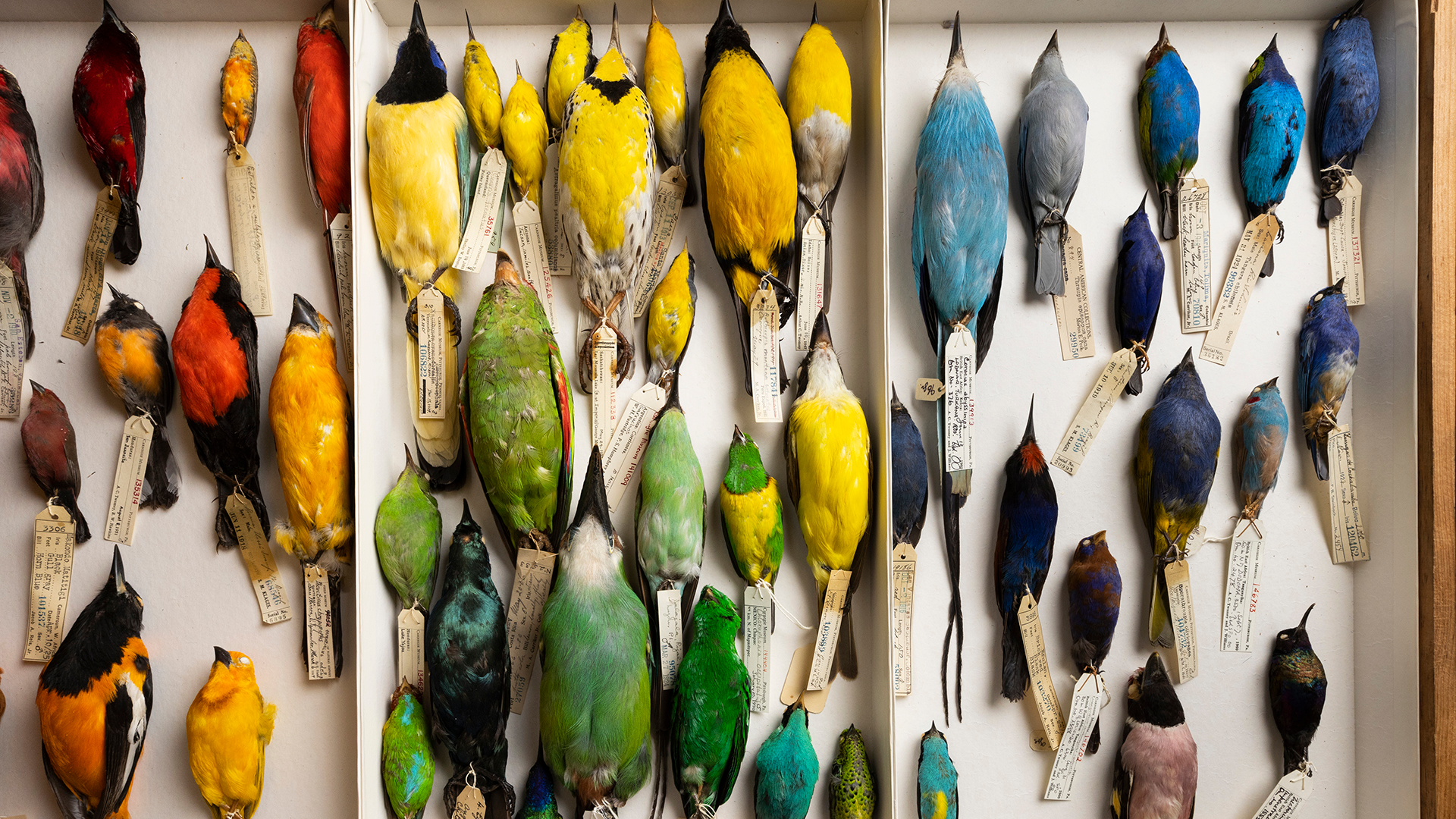
BIRDS AT CARNEGIE MUSEUM OF NATURAL HISTORY
The Section of Birds comprises a research collection of over 190,000 specimens, ranking roughly the ninth largest in the United States. The collection has worldwide coverage, with the strongest holdings from the Americas. The collection’s most considerable growth occurred from the late 1800s into the early 1900s. Over 155,000 specimens are preserved as study skins, but the collection also contains skeletons, spread wings and tails, egg sets, fluid-preserved specimens, taxidermy mounts, and some nests.
The Section of Birds Collection Highlights
The collection houses over 500 holotypes and over 200 specimens of extinct birds representing over 40 species. The section has all 41 orders of birds represented and around 89% of bird families.
The most significant geographical strengths of the collection are from New World birds. Carnegie Museum Section of Birds holds major groups from nearly every part of North America and one of the largest in the world from the eastern Arctic. Most areas of Central and South America are well represented, with collections of significant importance from Mexico, Belize, Honduras, Costa Rica, the Isle of Pines, Colombia, Venezuela, French Guiana, Amazonian Brazil, Bolivia, and northern Argentina. Our most important Old World collections are from former Yugoslavia, New Zealand, the Philippines, and the equatorial African countries of Cameroon, Angola, Kenya, Uganda, Tanzania, and Zimbabwe.
| North America | Central and South America | Africa | Asia | Oceania |
| Arctic | Amazonia | Egypt | China | |
| Southwest | Costa Rica | Japan | ||
| Plains | ||||
| Northwest Coast | ||||
| Upper Ohio Valley |
History of the Section of Birds
W. E. Clyde Todd began his association with Carnegie Museum as a freelance collector of birds in the summer field season in 1898. The following April, he was hired as an assistant dedicated to vertebrates, but he devoted himself to birds. In the museum’s first few decades, Mr. Todd employed talented field collectors for Carnegie Museum expeditions and purchased specimens from other professional field collectors. Some notable collectors included Samuel Klages (1917–1924) contributed over 29,000 specimens; Melvin A. Carriker, Jr. (1908–1923) contributed over 25,000 specimens; and Jose Steinbach (1910–1924), adding over 9,000 specimens, all concentrating in the Neotropics.
Mr. Todd was the Curator of Birds from 1914 to 1945. Of the study skins cataloged into the collection, 75% were added before his retirement. He continued to visit the section daily for the next 24 years, making his association with the museum span a surprising 71 years. During that period, he made 23 field trips to the northern latitudes, the last when he was 80. He won two Brewster awards for monumental works to ornithology with his The Birds of the Santa Marta Region, published in 1922, and Birds of the Labrador Peninsula and Adjacent Areas in 1963. His third major publication was Birds of Western Pennsylvania in 1940.
George Milsch Sutton became an assistant curator in 1919 and continued until 1924 when he retired to become Pennsylvania State Ornithologist. He continued his association with the Carnegie Museum and participated in field trips even after he began his Ph.D. program at Cornell. His dissertation is part of the Carnegie Memoir series The Birds of Southampton Island, Hudson Bay, published in 1932.
Ernest G. Holt was an assistant curator from 1927–1931, and Rudyerd Boulton held this title from 1926–1931. When Boulton left, Ruth Trimble assumed the position and became assistant curator in 1934 but left in 1940.
In 1936, Arthur Twomey was hired as an assistant and field collector. He assumed the position of assistant curator in 1940 and two years later became the second full curator in the section. Twomey led significant expeditions to many countries over his 37-year tenure and contributed over 17,000 specimens to the collection.
Ken Parkes became the first Ph.D. in the section as an assistant curator in 1953. By 1962 he became the third full curator and continued here until his retirement in 1996. Ken specialized in the study of molts, Philippine Birds, and taxonomy.
In 1963, Mary Heimerdinger (later known as Mary Clench) joined the section as an assistant curator and began to organize the anatomical collection. She was a specialist in pterylosis, the arrangement of feathers, and how they are implanted in the skin. In 1968 she was promoted to associate curator and continued in the section until her resignation in 1980.
D. Scott Wood was hired in 1981 as an assistant curator and began bringing the collection into the 20th century. With assistance from Ken Parkes, he was awarded two NSF grants, the first to purchase a new compactor system to re-house and expand the collection and the second to computerize the data. During this same time, Scott re-energized the collection’s growth, which had languished since the 1960s. He pushed for cataloging specimens held in the collection for many years and grew the anatomical collections. He resigned in 1992.
Brad Livezey came to the Carnegie Museum of Natural History in 1993 as an associate curator and was awarded full curatorship in 2001. He served as the museum’s first Dean of Science during that time. He was generally considered the world authority on avian osteology. The culmination of his research produced the Higher-Order Phylogeny of Modern Birds, which consumed over ten years of study with associate Richard Zusi of the Smithsonian Institution. This research opus analyzes more than 2,700 bird characters, such as beak shape, relative wing proportions, etc., to create the most comprehensive bird classification scheme known to science. Livezey was also one of the first researchers to embrace the concept that birds shared their evolutionary lineage with dinosaurs. Livezey worked for the Carnegie Museum of Natural History until his death in 2011.
Bradley Livezey Collection Study Grants
Brad Livezey was generally considered the world authority on avian osteology. He was among the first researchers to embrace the concept that birds shared their evolutionary lineage with dinosaurs. In honor of the former curator, Bradley C. Livezey Collection Study Grants are awarded competitively to those conducting morphological research in ornithology at the Carnegie Museum of Natural History. The scope of funding includes travel expenses incurred by visiting scientists and students working on avian morphological research at the museum.
SECTION OF BIRDS COLLECTION INQUIRIES
If you wish to visit the collection, please contact the collection manager by email to arrange an appointment at least a month before your anticipated arrival. Visiting hours are between 9:00 AM – 5:00 PM, Monday – Friday.
CM Bird data can be found on VertNet, iDigBio, and GBIF. Informal inquiries regarding specimen loans can be made by email, phone, or letter, to determine availability and possible constraints.
SECTION OF BIRDS LOAN POLICY TERMS OF USE
When requesting specimens from the Carnegie Museum of Natural History (CM) Section of Birds, you acknowledge that you support legitimate scientific collecting efforts and value the time and effort that goes into collecting, preparing, and maintaining museum collections. In exchange for granting these specimens for research, we may call on you to provide verbal or written support for scientific collecting and our collections. When requesting a loan from the CM Section of Birds, you agree to the following terms and conditions:
- Loaned specimens may not be transferred or forwarded to another individual or institution, even if the person who requested the loan changes institutional affiliation, without prior written permission from the Section of Birds.
- Study specimen loans must be returned before the loan’s due date. Requests for extensions should be made in writing before this date. The CM staff will send written inquiries regarding overdue loans. Failure to respond to CM inquiries may result in restriction of borrower privileges, including immediate termination of the loan, recall of all loaned specimens, and denial of subsequent requests.
- Loaned specimens, specimen labels, or tags may not be altered or removed in any way. Any suggested change(s) in specimen ID or associated data should be submitted in writing or noted on the loan invoice.
- Specimens on loan for research are to be housed securely and according to professional standards. Specimens should be protected from extremes of temperature and humidity, light, insects, vermin, and dirt.
- Packaging of returned loans is expected to utilize the same materials and care against damage used during the original shipment. The borrower agrees to cover the cost of return shipping and insurance. Specimens returning from loan are the responsibility of the borrower until received by the lending Section of the Museum. Upon return of the loan, previously unnoted damage or carelessness in packaging may jeopardize the borrowing institution’s future loan privileges.
- All original data collected from CM specimens and samples must be made publicly available following scientific journal requirements and study repeatability standards. Raw or processed genetic data, measurements from skins, character scores, images of specimens, etc., derived from samples or specimens must be deposited in publicly maintained databases or available in the supplementary materials upon publication. Deposited data must be accompanied by the appropriate CM catalog numbers (i.e., CM P#####). Before final publication, database accession numbers will be shared with Section staff. No further data use restrictions (i.e., data embargoes) shall exist upon the first publication of data collected from Section specimens or samples.
- Loaned samples, photographs, scans (i.e., 3D scans), DNA/isotope data, etc., remain the property of Carnegie Museum. Under no circumstances may these materials be transferred to another institution, used in new projects, or 3D printed unless approved by the Ornithology curatorial staff. Upon completion of the specified project, we reserve the right to request that all unused material, including purified DNA, be returned to the Section of Birds.
- Specimens used in publications, reports, or presentations must be included in a “Specimens Examined” section and the full catalog number listed (i.e., CM P#####). Acknowledgment should be given to “Carnegie Museum of Natural History, Section of Birds.” A PDF electronic copy should be sent to Section Staff.
- The Carnegie Museum should receive credit in exhibit labels, catalogs, photographs, and other publicity based on using specimens/objects from its collections as “Carnegie Museum of Natural History.” The acronym “CM” should cite the Museum’s specimens. Authors are asked to send two reprints of any publication based in whole or in part on material loaned from the Museum.
- The CM Section of Birds is not responsible for verifying specimen identifications. Efforts have been made to ensure the accuracy of information concerning identification, collecting locality, etc., but errors may exist. It is the borrower’s responsibility to verify specimen identifications. CM is not responsible for any circumstance arising from misidentified specimens.
- We reserve the right to apply special loan conditions in addition to those listed above if the circumstances warrant.
Study Specimen Loan Requests
A formal request on institutional letterhead must be submitted to the collection manager. Only cataloged and accessioned specimens are considered. Holotypes are not lent. The proposal should state the nature of the study and the research question(s) being addressed, the techniques used in the study, the taxa required (with CM catalog numbers), permit information, and shipping instructions.
For on-site visits, please briefly describe the reason for collection access. For research projects, the description should include a justification of taxon sampling and sample sizes, the techniques to be used, and evidence that those techniques are already being employed successfully in the investigator’s laboratory. For projects using the collection, including data requests, the description should include a justification of taxon sampling and sample sizes and the techniques to be used to examine specimens. Additionally, please note any particular space or equipment needs during your visit. For example, gloves, measuring tools, microscope, photocopy stand, calipers, ruler, additional lighting, additional space, or other equipment. CM Section of Birds cannot necessarily provide these items.
Limitations of Study Specimen Loans
Conditions: Specimen loans are made only to faculty, curators, and permanent research staff at recognized institutions with facilities to house and care for specimens properly. Graduate students must request specimens through their principal advisor. Individuals not affiliated with such an institution may request a loan of material only if they have made prior arrangements with an appropriate institution for housing specimens and if that institution agrees in writing to receive the specimens on the researcher’s behalf. Loans of fluid-preserved specimens are only made to institutions with staff certified to handle hazardous substances/dangerous goods. Loans are not transferable to other institutions. If the requestor changes institutional affiliation, the current loan must be terminated, and arrangements for a new loan agreement with the new institution must be requested. Failure to comply with this condition shall be grounds for refusal of future loan requests.
Duration: Loans are generally made for six months. Extensions may be granted upon receipt of a written request. While in the borrower’s care, the following precautions should be taken:
- All specimens must be protected against insects, dust, and excessive moisture and stored in a dark place with a constant temperature.
- Wet specimens will be stored in 70% ethanol and away from light.
- Specimens are not to be altered in any way unless written consent has been given.
Number of specimens: Specimens of active, in-house research may be sent out once work is completed. Type specimens and extinct and endangered species are not loaned. No more than half of the section’s holdings of a taxon from one locality are loaned simultaneously. In most cases, a request for all holdings will be divided in half, with the second shipment sent after the first was returned. Some shipments may be further divided depending on the size and condition of the specimens requested. The requestor may stipulate groupings of specimens in partial shipments within the confines of this policy.
Permits: The borrower is also responsible for providing copies of all relevant import and export permits for foreign loans. If permits are unnecessary, that should be stated in writing at the time of the request. Loans to countries where commercial delivery services are unreliable will be granted only when specimens can be hand-carried in both directions.
Upon receipt of the Loan
The borrower must email the Section of Birds Collection Manager to acknowledge the safe receipt of the specimens by two days after delivery. The borrower is liable for damage that occurs while the specimens are in their possession. All specimens must be safely stored in cases and protected against light, insects, dust, and excessive moisture. Wet specimens will be stored in 70% ethanol and away from light.
Upon receipt of a loan, check the number and condition of specimens, and note any discrepancies or damage incurred on the appropriate copy of the loan form. Sign and return this copy to the Section of Birds. A second copy will be provided with the shipment for your files. Retain the shipment box and packing materials for the return of the loan. If required, please use freezing at -20 °C for at least 72 hours for pest management treatments.
Authors are asked to send a copy of any publication dealing with this material to the Section of Birds.
The Section of Birds staff acknowledges that specimens that pre-date 1980 may have been treated with arsenic. However, not all specimens have been tested. Therefore, all users are advised to take proper precautions when handling our specimens.
Invasive procedures are not permitted without explicit written permission. Removal of skin or feather samples for molecular analyses is considered a destructive procedure, and written permission must be obtained in advance (see policies for tissue/destructive sampling loans).
Returning Loans
Before or at the time of return, please send a separate letter or email providing the date of shipment and any tracking information to the collection manager; shipments should be sent via FedEx. If specimens were fumigated while in your care, previously cleared with Section Staff, please confirm what pesticide was used.
Specimens must be packed in such a manner as to protect them from shock, moisture, or excessive heat. Skins should be wrapped in a material similar to the original shipment.
Use only tissue paper or similar soft paper to wrap the specimens, surrounded with cotton batting. Please do not use cotton batting or polyester when packing skeletal material.
Place address labels on the inside as well as outside of the package. The shipment must be insured for the value indicated on the front of the loan form.
Foreign loans should not be returned by airfreight. Please return via the postal system or by private carrier such as FedEx. The loan should be accompanied by US Fish and Wildlife form 3-177 provided by the Section of Birds for re-importation of the specimens, a copy of a letter written to our USFWS special agent at the time of export, original collecting permits or other statements of legal collection, and a copy of the loan invoice. These items must be attached to the outside of the shipping box to facilitate inspection upon re-importation.
SHIP TO:
Serina Brady
Collection Manager – Section of Birds
Carnegie Museum of Natural History
4400 Forbes Avenue
Pittsburgh, PA 15213
In the case of re-identification of specimens, new designations should be provided to our curatorial staff when specimens are returned to the Museum. These data can be provided on a copy of the original loan invoice or in a separate list that contains the CM catalog numbers and respective new identifications (either in text or spreadsheet format).
Acknowledging CM Section of Birds for the use of specimens or their data
Specimens used in publications, reports, or presentations should be included in a “Specimens Examined” section and the whole catalog number listed (i.e., CM P#####).
The Carnegie Museum should be acknowledged in any publications resulting from its specimens’ use. Acknowledgment should be given to “Carnegie Museum of Natural History, Section of Birds.” A PDF electronic copy should be sent to the Curator and Collections Manager of the Section.
Photography, Scholarly, and Artists Requests
A formal request on letterhead must be submitted to section staff. Only cataloged and accessioned specimens are considered. All proposals should contain the name of the researcher, the name of the supervisor (if applicable), affiliation, mailing address, contact information, the nature of the study and the research question(s) being addressed, the techniques used in the study, the taxa required (with CM catalog numbers), and justification for the request.
Imaging Agreement: Photographs, CT scans, and 3D scans of Section of Birds specimens, archival materials, or artwork are copyrighted by the Carnegie Museum of Natural History (CM). Any such use of images in publications must credit and acknowledge that the image is owned by (CM).
Commercial agreement: The recipient of a loan or visitors to the collection must agree that any results derived from CM specimens will not be used commercially. All commercial rights for any discovery associated with a loan from the CM remain the property of the CM or as stipulated in agreements the CM may have established with foreign governments in initially acquiring the specimens.
For photograph requests, provide a list of the specimens or archival materials you would like to visit, request, have photographed, or have examined by CM staff. Justify the number and types of materials (e.g., tissues/specimens/archival documents/art collections) and taxa you would like to request or study. This can be submitted as a separate spreadsheet. Please explain if you require access to types, extinct or rare birds.
For scholarly requests, provide evidence that the investigator contributes to the general availability of museum specimens to the avian research community. Provide lists of available specimens or links to online databases demonstrating that the investigator contributes and loans material to other researchers. Include a discussion of the museum specimens collected by the investigator for the project. If voucher specimens were not collected, include a justification. Include a discussion of the contribution that other institutions will make to the sampling needs of the project. Provide evidence of the credentials and other qualifications of the researcher to perform the project. For on-site visits, include experience working in museum collections. Also, explain the funding source of the project.
For Artistic requests, list the specimens or taxa you would like to examine, possible dates for in-person visits, and the purpose for the examination.
Destructive Sampling Loan Requests and Terms of Use
In addition to the general loan policy and agreement for CM specimens, some specific policies and guidelines cover the alteration or removal of specimens or parts thereof from the collection in the Section of Birds. The procedures and guidelines regarding removing samples of skin, feathers, portions of bone, pieces of dried muscle or other tissues, organs, or pieces of fluid-preserved specimens cover both external and internal requests. Our collections are finite resources, and one of our primary responsibilities is to protect the Carnegie holdings to ensure they are available for future researchers.
We emphasize that destructive samples are intended to supplement research materials obtained from other sources, not replace primary data collection efforts such as field sampling of extant taxa. While we strongly encourage collections-based research, our obligation to protect the Carnegies’ holdings may require that some requests for destructive samples be denied. The curator and collection manager consider destructive sampling requests on a case-by-case basis.
Description of a Destructive Sample
The Section of Birds considers any request that modifies a voucher specimen as destructive sampling. Typical examples of destructive sampling of museum specimens for scientific purposes:
- removal of skin, muscle, feather, bone, or cartilage samples for genetic studies
- removal of feathers, tissues, and bone samples for toxicological or stable isotope investigations
- dissection or the removal of organs for anatomical studies
- staining specimens for CT scanning
Application Protocol
A formal request on institutional letterhead must be submitted to the collection manager. Only cataloged and accessioned specimens are considered. The proposal should state the nature of the study and the research question(s) being addressed, the techniques used in the study, the taxa required, the number of individuals needed, and the exact nature and size of the sample requested. Requests for destructive sampling must contain compelling reasons why the project can only be completed using museum specimens. This includes evidence that the research question being addressed is explicitly historical and thus requires the use of museum specimens or that the taxa of interest cannot be sampled directly from the field.
Requests for destructive sampling should provide evidence that the investigators have experience with associated analytical procedures (e.g., PCR amplification and sequencing of DNA from museum skins) and that the proposed studies will likely generate usable data.
If, on the rare occasion, permission is granted to remove specimen parts (e.g., skin clips, reproductive organs, stomach contents), those parts must be labeled with the CM catalog number by the researcher and returned with the specimens. Any slide preparations (e.g., SEM stubs, histological, karyological) must be returned properly labeled. Any remaining samples (feathers, DNA extracts, etc.) should be returned to the Carnegie Section of Birds.
Requests must include the following:
- Brief Description of Research – Describe the purpose, objectives, techniques, gene(s), and the number of base pairs to be studied, lab facilities, qualifications and experience of the investigators involved, sources of funding, method(s) of analysis, feasibility and time frame of the study, and expected significance of the study. Please specify other sources (and numbers) of specimens that will be sampled in other museums or tissue collections. Will the applicant collect specimens for the study? For destructive sampling requests for genetic studies, please include a statement concerning the availability or lack of comparable material in frozen tissue collections and indicate how this was determined. Investigators are responsible for determining whether their project substantially duplicates or overlaps other ongoing research programs. If overlap exists, investigators should provide a compelling argument for why duplication should be supported by the destructive sampling of CM specimens.
- List of Material Requested – Please specify taxa, number of individuals, specimen catalog numbers and localities (if relevant), tissue type(s), nature of the material (i.e., skin, feather, etc.), and the amount of material needed.
- Evidence of Reciprocal Benefit – Museum collections are expensive and time-consuming to build and maintain, and specimens are depleted by destructive sampling. We encourage requesters to support the growth, maintenance, and accessibility of biological collections. Please describe your efforts in this regard. Applicants associated with labs or institutions that do not maintain museum collections are urged to consider depositing voucher specimens at CM.
- Genomic Sampling – Please be aware that if you request a specimen whose genome you will be sequencing, we will ask that you deposit the genomic data in a public database and that you immediately release the data to the public. This ensures that we allow maximum access to our specimens and their data because we do not want to continue to sample that individual after its genome has been sequenced. Sequencing a genome can be expensive and requires teams of people and significant technical and analytical expertise, but it also costs and takes expertise to obtain specimens, house and care for them, and make them available for research.
- Permit Verification – Please provide copies of any required permits to receive the requested samples. CITES or other permits may be necessary if the material is to be exported.
- Shipping Instructions – Please provide the shipping address of the institution to which the loan will be sent, along with a contact phone number and e-mail address, shipping, and billing information.
Application Approval
Proposals will be evaluated by curatorial and collection management staff with, in some cases, advice solicited from colleagues at other institutions. Only complete applications will be considered. Approval will be based on the following criteria:
- Rarity of specimens and potential for replacement
- Qualifications of the investigators
- Evidence of sufficient lab facilities and funding
- Amount of genetic sequence or isotope data to be extracted from samples
- Approval of original collector(s) where applicable
- Proportion of samples being collected by applicants
- Evidence that the applicants are contributing to museum collections by collecting, properly documenting, and depositing voucher specimens in collections where they are available to others or by supporting such collections financially
Because the intent is to facilitate quality research while conserving the specimens in the collection, the applicant should:
- Clearly show the purpose and merit of the research.
- Strongly justify the need for sampling specimens by using published and proven methodology backed up by appropriately cited literature in the proposal.
- Keep the amount of any sample required and the number of taxa sampled as small as possible.
- Demonstrate the competence of the researchers and the availability of institutional resources to complete the research project in a timely period. Requests should provide evidence that the investigators have experience with associated analytical procedures (e.g., PCR amplification and sequencing of DNA from museum skins) and that the proposed studies will likely generate usable data.
- The rarity of the taxa to be sampled in the wild (endangered species and poorly known taxa) and in museum collections will influence the approval of a request.
- The effect of the sampling procedure and the amount of the sample taken on the physical integrity of any specimen and its future utility for other kinds of systematic research will influence the approval of a request.
Sampling Procedures
Collection staff will conduct the sampling, and specimen records will be annotated at that time. The specimen record will reflect the type of sample removed and the location from which the sample was taken. This information will be recorded for the assessment of future sampling requests. The final selection of specimens to be sampled will be made by collection staff in consultation with the researcher if the researcher is on-site to examine the specimens with section staff. Typically only one sample can be removed from any specimen. Destructive sampling of borrowed specimens will not generally be allowed. Holotypes are not available for sampling.
Destructive Sampling Loan Terms of Use
When requesting a loan from the CM Section of Birds, along with agreeing to the Loan Policy Terms of Use, you agree to these additional terms and conditions:
- Tissues will be used only for the purposes stated in the Description of Research. The Description of Research may not be amended, nor may the material be used for other purposes without written permission from the Section of Birds. Samples are only approved for the study as outlined in the application and should not be used for additional studies without prior approval. The samples (or any part, extract, or product thereof) may not be transferred or lent to a third party or another laboratory without written consent from the Section of Birds.
- Loaned tissues remain the property of the Carnegie Museum of Natural History (CM). Upon completion of the specified project, all unused material, including purified DNA, must be returned to the Section of Birds. We ask that usable samples (cloned genomic DNA, PCR-amplified mtDNA, syringes, slides, etc.) be returned to us for storage in the collection, where they can be made available to other researchers.
- A complete record of the material analyzed, the outcome of the analysis, and the resulting research, including publications, shall become a part of the permanent record of the specimen/object. The requesting party must agree to make all data produced using the Museum’s specimens/objects available to the worldwide scholarly community through open-access data repositories. The Museum reserves the right to independently publish the results if the investigator fails to do so within five (5) years.
- Raw data associated with the computerized specimen record (locality, GIS coordinates, date of collection, collector, etc.) will not be supplied to or made available on any publicly available database (digital, electronic, or hard copy) without written consent from the Section of Birds.
- GenBank accession numbers should be created for all sequences and referenced using the following format in the specimen_voucher field: CM: Birds: XXXXXX. Genbank accession numbers and raw stable isotope data must be reported to the Division of Birds. These data will be appended to the official specimen record along with the name to whom the sample was granted and resulting publications.
- No commercial use will be made of, licensed, or patent applied for on the samples or any information or data derived from them without written consent from Section of Birds. In some cases, commercial or restrictive use of the samples would violate the terms of the permits under which they were collected.
- The “CM” (the correct acronym for Carnegie Museum of Natural History) will be explicitly acknowledged in each publication based in part or entirely on raw data derived from Section of Birds specimens. Voucher specimen numbers will be acknowledged in each publication that results from research on or other use of the samples. This may be done in table or text format.
- Recipients will send two reprints of each paper (the alternative is a PDF) or book (one copy) to the Section of Birds upon publication. A signed agreement from book publishers is required.
- Any other stipulations made by the Section of Birds as a condition of a particular transfer or exchange.
- All responsible parties must sign and date a letter of agreement specifying the terms of the transfer.
Section of Birds Collection Featured in Museum Displays
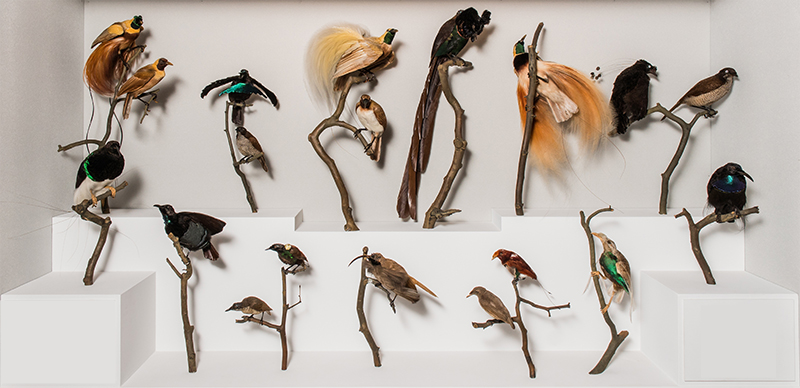
The Section of Birds collection is the focal point of Bird Hall on the third floor of the museum. Other ornithological specimens—like a bald eagle, bohemian waxwings, and gulls—are also part of the dioramas in the halls of African and North American Wildlife and Botany Hall.
Bird Research at Powdermill Nature Reserve
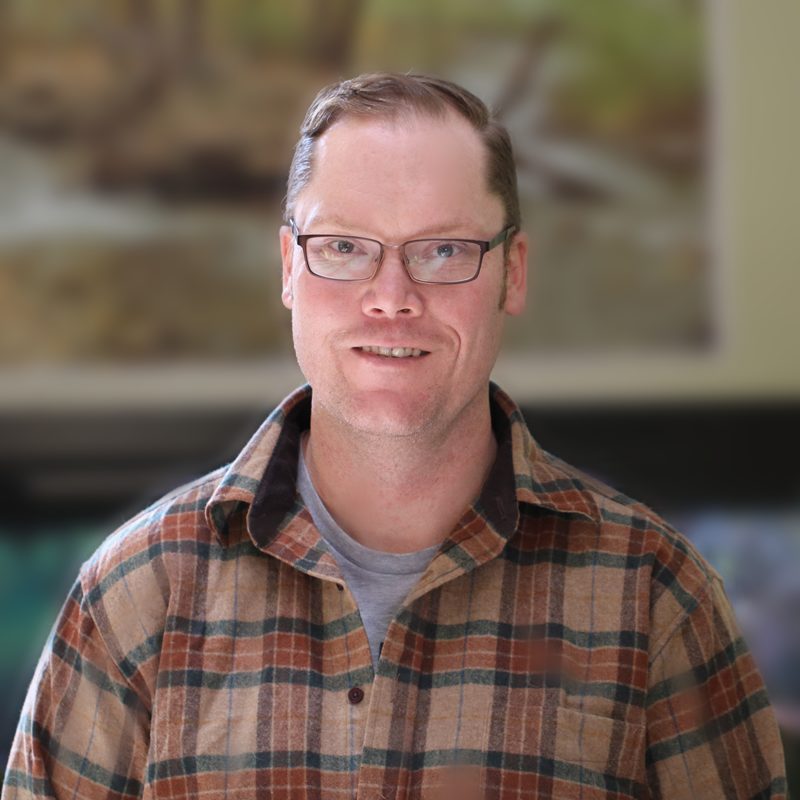
Luke DeGroote
Avian Ecologist and Bird Banding Program Manager
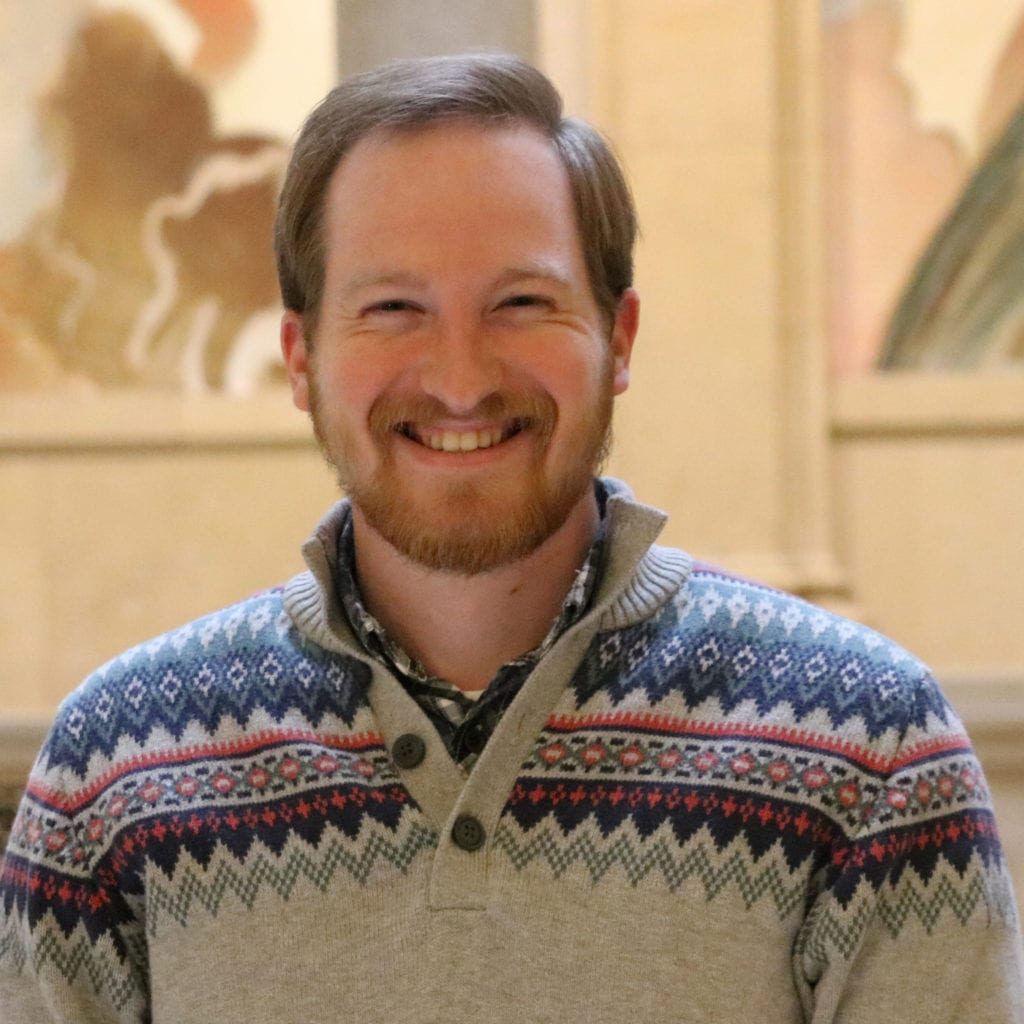
Jon Rice
Urban Bird Conservation Coordinator
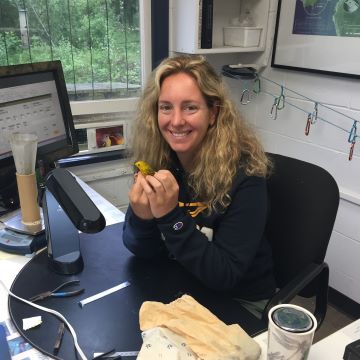
Annie Lindsay
Bird Banding Program Manager
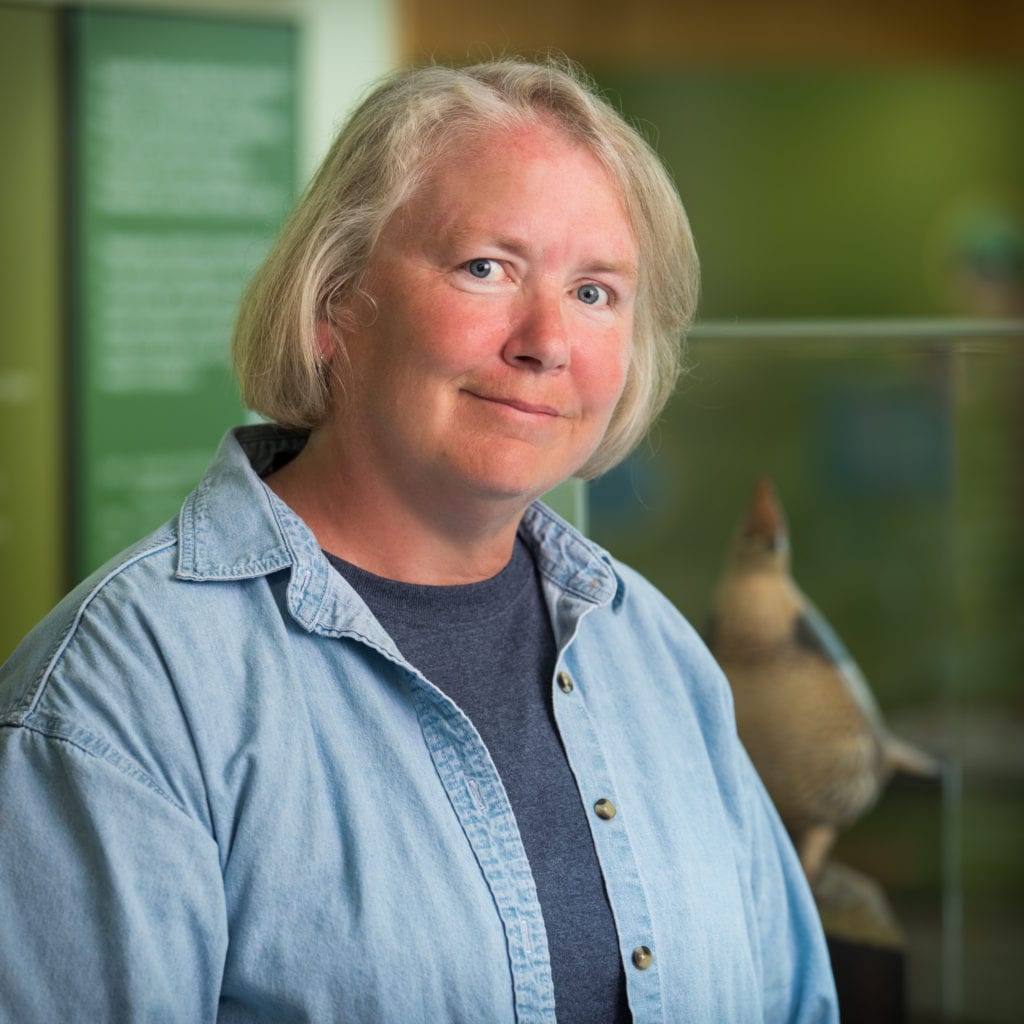
Mary Shidel
Bird Banding Assistant
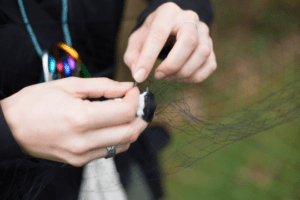
The avian research center at Powdermill Nature Reserve, Carnegie Museum of Natural History’s environmental research center in Rector, Pennsylvania, bands about 10,000 birds each year. Track banding data on the avian research center’s website, and learn more about other research initiatives like flight tunnel analysis and the bioacoustics lab. Information on banding workshops, visits, and the center’s facilities is also available.
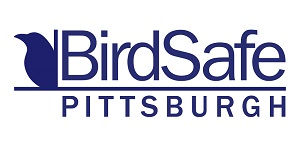
BirdSafe Pittsburgh is a local partnership that engages volunteer citizen scientists in researching the issue of birds colliding with windows. Window collisions are one of the leading causes of human-induced avian mortality, with estimates of up to 1 billion birds dying each year in the United States alone. Volunteers find and document birds that have collided with windows throughout Pittsburgh and monitor their homes in order to learn more about window collisions on residential buildings. Dead birds are brought back to Carnegie Museum of Natural History to become part of the collection. Live birds are safely captured to be rehabilitated and released.
The flight tunnel at Powdermill Avian Research Center has been instrumental in testing “Bird Proof Glass” or glass that birds can see to avoid a collision.
Bird Blogs

A Year in Review: Bird Banding 2023
by Annie Lindsay Nestled between the Chestnut and Laurel Ridges near the town of Rector, Pennsylvania lies Powdermill Nature Reserve, Carnegie Museum …
2023 Rector Christmas Bird Count Results
by Annie Lindsay For a few hours before dawn on the chilly morning of December 16, several intrepid birders scoured the Rector …
Birds in “Twelve Days of Christmas”: a Museum Search
by Patrick McShea The Twelve Days of Christmas When a traditional song about Christmas gifts reaches young ears, the centuries-old lyrics naturally …
Museum Connections to a College Lab
by Patrick McShea During a recent Vertebrate Diversity Lab at Duquesne University, Dr. Brady Porter’s students closely examined preserved wildlife material on …
Do No Harm: Dealing with Spotted Lanternflies
by Jonathan Rice Spotted lanternflies are a “true bug,” cousins of the cicada and stink bug. Unlike our native bug species, these …
Hummingbird Lessons
by Patrick McShea Banding hummingbirds is a routine procedure at Powdermill Avian Research Center (PARC). Ruby-throated Hummingbirds are common summer residents throughout …
Tracking Migratory Flight in the Northeast
by Patrick McShea Explanations of networks benefit from maps or other graphic representations of linked participants. In the case of a recent …
Ruffed Grouse or Scarlet Tanager: Debating the Pennsylvania State Bird
by Pat McShea Should a wildlife species representing a state reflect the creature’s abundance within the designated boundaries? Where state birds are …
Building Birding Skills
by Patrick McShea Today is National Go Birding Day, a designation that prompts questions about how best to become involved in such …
